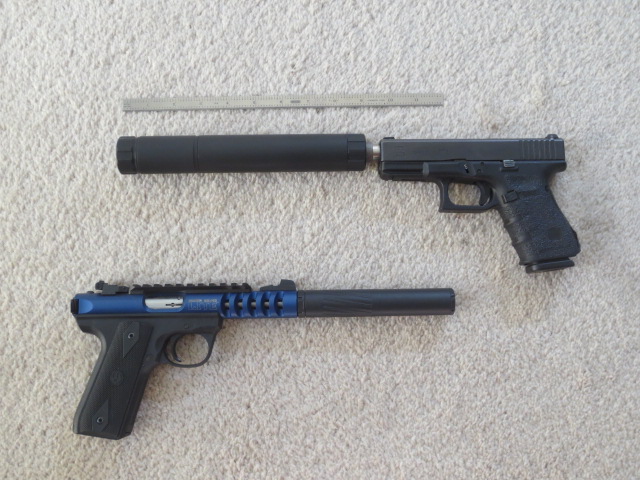Often referred to as the “National Firearms Act of 1934”, this Act was a knee-jerk reaction to the Saint Valentine’s Day massacre orchestrated by Al Capone in Chicago in 1929. The Act’s intent was to get the weapons used by the gangland mobs off the street, such as fully automatic machine guns, silencers, short-barreled rifles, short-barreled shotguns (aka “sawed off shotguns”) and explosive devices. This Act regulates the manufacture, sale, registration and transfer of these types of items.
Owning these items is not illegal, just restricted. To own a silencer (or suppressor as it is actually called), for example, a prospective buyer must first register into the National Firearms Registry and pay $200 to the federal government, known as a “tax stamp”, and be approved by the ATF. Once approved, the prospective buyer may purchase a suppressor. At the time of the Act’s passage, the $200 fee was quite prohibitive for the average citizen as it was the equivalent of $4,555 in 2023. Yet, the $200 fee has remained unchanged since the Act’s inception.
Any item falling into the categories identified in the Act are known as “NFA Items”. Private owners wishing to purchase an NFA item must obtain approval from the ATF, pass an extensive background check to include submitting a photograph and fingerprints, register the firearm, receive ATF written permission before moving the firearm across state lines, and pay a tax. The request to transfer ownership of an NFA item is made on an ATF Form 4.
NFA items may also be transferred to corporations (or other legal entities such as a trust). When the paperwork to request transfer of an NFA item is initiated by an officer of a corporation, fingerprint cards and photographs of the official need to be submitted with the transfer request. This method has downsides, since it is the corporation (and not the principal) that owns the firearm. Thus, if the corporation dissolves, it must transfer its NFA weapon to the owners. This event would be considered a new transfer and would be subject to a new transfer tax.
In a number of situations, an NFA item may be transferred without a transfer tax. These include sales to government agencies, temporary transfers of an NFA firearm to a gunsmith for repairs, and transfer of an NFA firearm to a lawful heir after the death of its owner. A permanent transfer, even if tax-free, must be approved by ATF. The proper form should be submitted to ATF before the transfer occurs. For example, lawful heirs must submit a Form 5 and wait for approval before taking possession of any NFA item willed to them. Temporary transfers, such as those to a gunsmith or to the original manufacturer for repair, are not subject to ATF approval since they are not legally considered transfers. ATF does, however, recommend filing tax-free transfer paperwork on all such temporary transfers, to confer an extra layer of legal protection on both the owner and the gunsmith.
The most famous legal case related to this Act is known as the “Miller” case. In 1938, the United States District Court for the Western District of Arkansas ruled the statute unconstitutional in United States v. Miller. The defendant, Miller, had been arrested for possession of an unregistered short double-barreled shotgun, and for “unlawfully … transporting [it] in interstate commerce from Claremore, Oklahoma to Siloam Springs, Arkansas” which perfected the crime. The government’s argument was that the short- barreled shotgun was not a military-type weapon and thus not a “militia” weapon protected by the Second Amendment, from federal infringement. The District Court agreed with Miller’s argument that the shotgun was legal under the Second Amendment.
The District Court ruling was overturned on a direct appeal to the United States Supreme Court (see United States v. Miller). No brief was filed on behalf of the defendants, and the defendants themselves did not appear before the Supreme Court. Miller himself had been murdered one month prior to the Supreme Court’s decision. No evidence that such a firearm was “ordinary military equipment” had been presented at the trial court (apparently because the case had been thrown out—at the defendants’ request—before evidence could be presented), although two Supreme Court justices at the time had been United States Army officers during World War I and may have had personal knowledge of the use of such weapons in combat. The Supreme Court indicated it could not take judicial notice of such a contention.
The Supreme Court reversed the decision of the District Court and held that the NFA provision (criminalizing possession of certain firearms) was not in violation of the Second Amendment’s restriction and therefore was constitutional.

